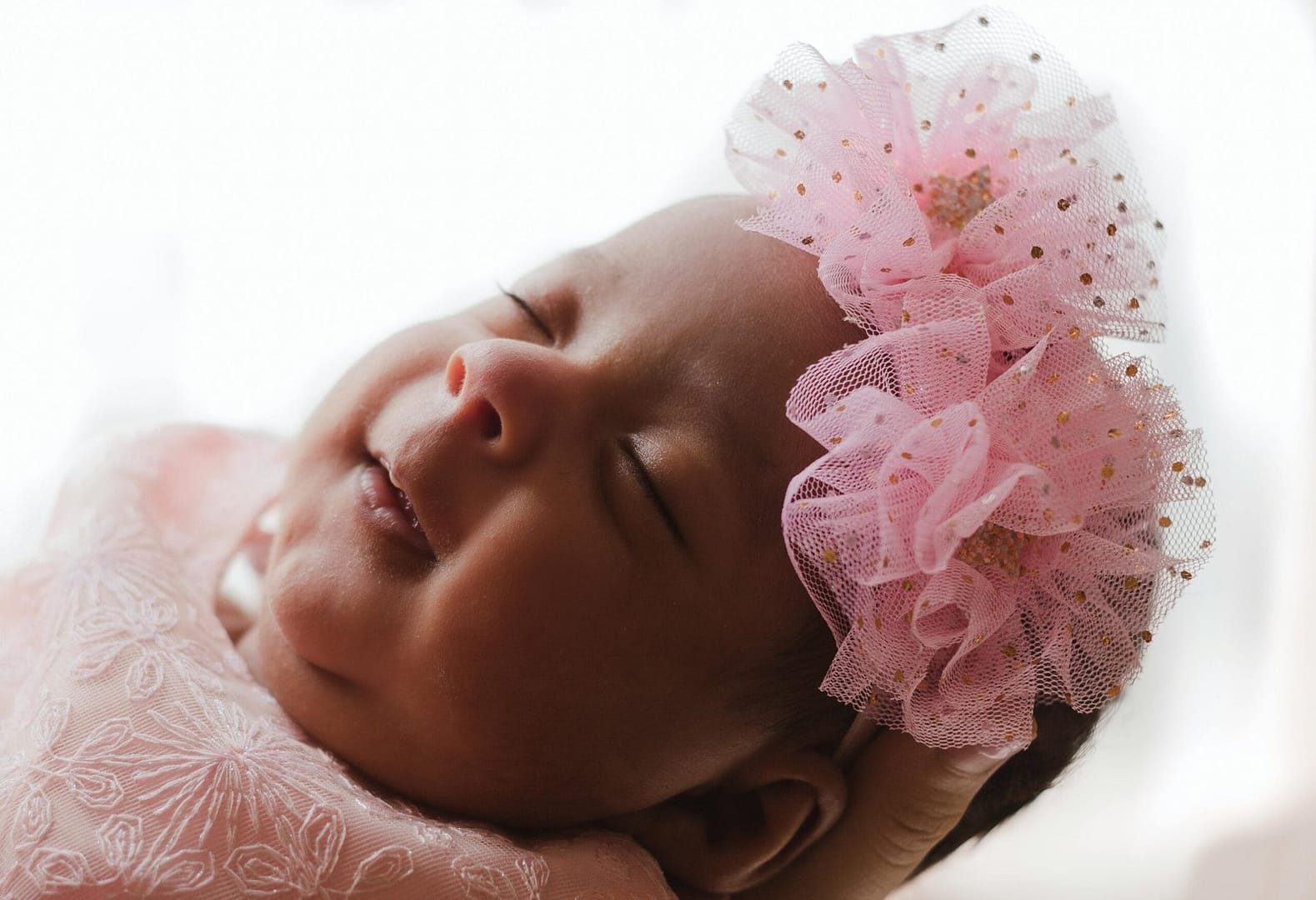Understanding your baby’s sleep cycles is one of the most important and often confusing parts of early parenthood. Baby sleep is not just about how long your little one sleeps, but how they sleep, why they wake, and how their sleep patterns change as they grow. This in-depth guide will help you decode the science of baby sleep cycles, why they matter, how they evolve, and how you can support healthy sleep habits from birth through the first year.
Understanding Baby Sleep Cycles: What Is a Baby Sleep Cycle?
A sleep cycle is a sequence of different sleep stages that repeat throughout a period of sleep. In babies, these cycles are much shorter and different from those of adults. Each cycle includes periods of lighter and deeper sleep, and babies move through these cycles multiple times during naps and overnight.
The Two Main Types of Sleep in Babies
- REM (Rapid Eye Movement) Sleep: Also called active sleep, this is when babies may twitch, move, make noises, and even smile. Their eyes move rapidly under closed lids, and their breathing may be irregular. REM sleep is believed to be crucial for brain development.
- Non-REM (NREM) Sleep: Also called quiet sleep or deep sleep, this is when babies are still, their breathing is regular, and it’s harder to wake them. NREM sleep is restorative and important for physical growth and immune function.
Stages of a Baby’s Sleep Cycle
While adults experience four distinct sleep stages, newborns and young infants have simpler cycles:
- Stage 1: Drowsiness – Baby is dozing off, eyes may open and close.
- Stage 2: Active (REM) Sleep – Baby moves, may startle, breathing is irregular.
- Stage 3: Light Sleep – Sleep becomes less active, but the baby can still be easily awakened.
- Stages 4 & 5: Deep (NREM) Sleep – Baby is quiet, still, and very hard to wake.
Babies cycle through these stages multiple times during each sleep period. A full cycle for a newborn can be as short as 20–50 minutes, compared to 90–120 minutes for adults.
How Baby Sleep Cycles Differ from Adult Sleep
- Shorter Cycles: Newborns have sleep cycles lasting only 20–50 minutes, while adults cycle every 90–120 minutes.
- More REM Sleep: Babies spend about 50% of their sleep in REM, compared to about 20% for adults. REM sleep is vital for brain development in infants.
- Frequent Waking: Because their cycles are short, babies wake more often, often at the end of a cycle. This is normal and not a sign of a sleep problem.
- Developmental Changes: As babies grow, their sleep cycles lengthen and become more like adult sleep, with more time spent in deep NREM sleep and less in REM.
Why Are Baby Sleep Cycles So Short?
There are two main reasons for short, fragmented sleep in babies:
- Small Stomachs: Newborns need to feed frequently, so they wake often to eat and grow.
- Immature Circadian Rhythms: Babies are not born with a strong sense of day and night. Their internal body clocks (circadian rhythms) develop over the first few months.
How Baby Sleep Cycles Change Over Time
Newborns (0–3 Months)
- Sleep Duration: 14–20 hours in 24 hours, broken into short bursts.
- Cycle Length: 20–50 minutes per cycle.
- REM vs. NREM: About 50% REM (active) and 50% NREM (quiet) sleep.
- Pattern: Babies wake frequently for feeding, changing, or comfort. Sleep is not organised by day or night.
3–6 Months
- Sleep Duration: 13–16 hours in 24 hours, with longer stretches at night.
- Cycle Length: Begins to lengthen to 40–60 minutes.
- Sleep Regression: Around 4 months, babies experience a major shift where their sleep cycles become more adult-like. They may wake more often between cycles if they cannot self-settle.
6–12 Months
- Sleep Duration: 12–15 hours in 24 hours, with more consolidated night sleep.
- Cycle Length: 50–60 minutes, gradually increasing.
- Day/Night Rhythm: Circadian rhythms mature, and babies start to understand the difference between day and night.
The Science Behind Baby Sleep Stages
REM (Active) Sleep
- Brain Development: REM sleep is critical for the rapid brain growth and neural connections happening in infancy.
- Movements: Babies may twitch, smile, or grimace. Their breathing is irregular, and they may make noises.
- Waking: Babies are more likely to wake from REM sleep, especially if hungry or uncomfortable.
NREM (Quiet) Sleep
- Physical Growth: Deep sleep is when the body repairs, grows, and strengthens the immune system.
- Stillness: Babies are very still, breathing is regular, and they are hard to wake.
Understanding Partial Awakenings
It’s normal for babies to wake or stir briefly between sleep cycles. This is called a partial awakening. Sometimes babies settle themselves back to sleep; other times, they need help.
- Self-Settling: As babies mature, they gradually learn to connect sleep cycles and return to sleep independently.
- Sleep Associations: If babies rely on rocking, feeding, or other cues to fall asleep, they may need those same cues to return to sleep between cycles.
Circadian Rhythms and Baby Sleep
Circadian rhythms are the body’s internal clock that regulates sleep and wake cycles. Newborns are not born with mature circadian rhythms; these develop over the first few months.
How to Support Healthy Circadian Rhythms
- Expose your baby to natural light during the day to help set their internal clock.
- Keep nighttime feeds and changes quiet and dimly lit to reinforce the difference between day and night.
- Establish a consistent bedtime routine to signal to your baby that it’s time to sleep.
Practical Tips for Supporting Healthy Baby Sleep Cycles
1. Watch for Sleep Cues
Learn to spot signs your baby is tired, such as rubbing eyes, yawning, fussiness, or staring off into space. Putting your baby down at the first signs of tiredness can help them fall asleep more easily.
2. Create a Sleep-Friendly Environment
- Keep the room dark and quiet at night.
- Use white noise to mask household sounds.
- Maintain a comfortable, safe sleep temperature.
3. Establish a Consistent Routine
A predictable bedtime routine helps babies wind down and prepares them for sleep. This could include a bath, gentle massage, story, or lullaby.
4. Encourage Day/Night Differentiation
- During the day, keep the house bright and active.
- At night, keep things calm, quiet, and dimly lit.
5. Feed Responsively
Newborns wake frequently to feed. Always respond to hunger cues, especially in the early months.
6. Practice Safe Sleep
- Always place your baby on their back to sleep.
- Use a firm, flat sleep surface with no loose bedding or toys.
Common Sleep Challenges and Solutions
Frequent Night Wakings
Babies naturally wake between sleep cycles. As they grow, they learn to connect cycles and sleep for longer stretches. If your baby wakes frequently and struggles to return to sleep, consider:
- Reviewing sleep associations, try to encourage your baby to fall asleep independently.
- Ensuring your baby isn’t hungry, uncomfortable, or unwell.
Short Naps
Short naps are common in the first few months due to short sleep cycles. As babies mature, naps lengthen. Try:
- Watching for sleep cues and putting your baby down before they become overtired.
- Using white noise and blackout curtains to minimise disturbances.
Sleep Regressions
Sleep regressions are periods when a baby’s sleep temporarily worsens, often due to developmental leaps (e.g., the 4-month regression). These are normal and usually pass with time and consistency.
How Baby Sleep Cycles Affect Parents
Understanding that frequent waking is normal in babies can help parents set realistic expectations and reduce stress. As your baby grows and their sleep cycles mature, longer stretches of sleep will come naturally.
Frequently Asked Questions About Baby Sleep Cycles
How long is a baby sleep cycle?
Newborn sleep cycles last 20–50 minutes. By 6 months, cycles are closer to 60 minutes.
Why does my baby wake so often at night?
Babies wake at the end of each sleep cycle, often due to hunger, discomfort, or the need for help returning to sleep.
When do babies start sleeping longer at night?
Around 3–6 months, many babies begin sleeping for longer stretches as their circadian rhythms mature and they learn to connect sleep cycles.
What is REM sleep, and why is it important for babies?
REM (active) sleep is when the brain is most active. It is crucial for brain development, learning, and memory in infants.
How can I help my baby sleep better?
Follow a consistent routine, watch for sleep cues, create a sleep-friendly environment, and encourage healthy sleep associations.
Conclusion
Baby sleep cycles are complex, ever-changing, and vital for healthy development. By understanding the science behind baby sleep, recognising normal patterns, and supporting your baby’s evolving needs, you can foster better sleep for your child and for yourself. Remember, every baby is unique. While sleep challenges are common, most resolve with time, consistency, and patience.
If you have concerns about your baby’s sleep or development, consult your paediatrician or a certified sleep consultant for personalised advice.
References: Pampers, Children’s Hospital of Philadelphia, Safe Sleep Space, Cibdol, Sleep Foundation, HealthyChildren.org, Pregnancy Birth and Baby, Little Ones, Love to Dream

